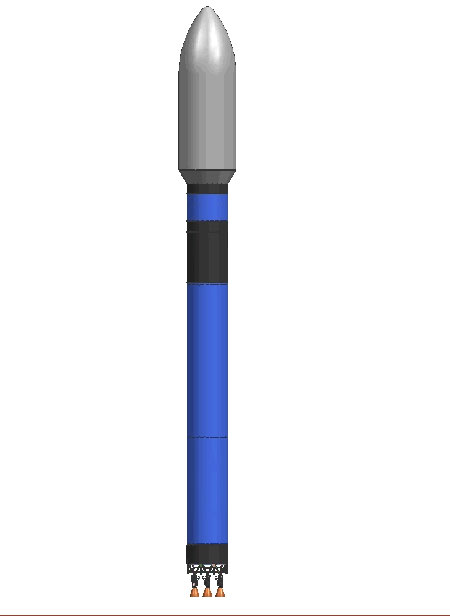SpaceX to Tackle Fully Reusable Heavy Lift Launch Vehicle

Space Exploration Technologies Corporation(SpaceX) announced today that it will develop a Falcon 9 booster - an EvolvedExpendable Launch Vehicle (EELV) class vehicle.
A key goal of SpaceX is developing a familyof launch vehicles intended to increase the reliability and reduce the cost ofaccess to space by a factor of ten.
SpaceX, headquartered in El Segundo,California, is bankrolled and run by Elon Musk, a successful entrepreneur thatamong past activities co-founded PayPal, a leading electronic payment system.
According to a press statement detailingcompany plans, the Falcon 9 would be capable of launching approximately 21,000pounds (9,500 kilograms) to Low Earth Orbit (LEO) in its medium configurationand 55,000 pounds (25,000 kilograms) to LEO in its heavy configuration, a liftcapacity "greater than any other launch vehicle," the SpaceX statement said.
In the medium configuration, Falcon 9 wouldbe priced at $27 million per flight with a 12 ft (3.6 m) fairing and $35million with a 17 ft fairing. Prices include all launch range and thirdparty insurance costs, making Falcon 9 the most cost efficient vehicle in itsclass worldwide.
First booster, yet-to-fly
SpaceX initially intended to follow itsfirst vehicle development, Falcon 1, with the intermediate class Falcon 5launch vehicle.
But the company now explains that, inresponse to customer requirements for low cost enhanced launch capability,SpaceX has accelerated development of an EELV-class vehicle. Therefore it isupgrading Falcon 5 to Falcon 9.
Get the Space.com Newsletter
Breaking space news, the latest updates on rocket launches, skywatching events and more!
According to the company statement, SpaceXhas sold Falcon 9 to a U.S. government customer. SpaceX still plans tomake Falcon 5 available in late 2007.
The announcement today comes at a time when the companyhas yet to fly its Falcon 1 booster.
The maiden launch for Falcon 1 is now scheduled for fallof this year from the SpaceX island launch complex in the KwajaleinAtoll. A second Falcon 1 mission is slated to follow a classified launchof a Titan 4 booster from the Vandenberg Air Force Base in California.
Falconeering the future
Musk told SPACE.com that Falcon 9 is intended for three roles:
-All sizes ofGeostationary Transfer Orbit (GTO) satellites, including commercial andgovernment customers.
-Heavy LEOsatellites, which are mainly U.S. Department of Defense spacecraft.
-Resupply of theInternational Space Station with cargo and later crew transportation.
"The prices we are showing do not accountfor reusability, so I'm hopeful that we will be able to reduce costssignificantly over time. Also, this is still the first generation of ourpropulsion technology," Musk said. The SpaceX Merlin 2 engine will benefitfrom a very significant thrust upgrade and also be considerably cheaper perpound of thrust than Merlin 1, he said.
"As a result, the generation of rocketsbased on Merlin 2 will be much cheaper per unit mass to orbit than the Falconline, which is based on Merlin 1," Musk said.
Musk noted that the goal of SpaceX is tomake Mars colonization affordable.
That means growing to super-heavy 100-pluston lift, super-cheap and super-reliable launcher, Musk said. "Falcon 1was the first step and Falcon 9 is the second step."
Join our Space Forums to keep talking space on the latest missions, night sky and more! And if you have a news tip, correction or comment, let us know at: community@space.com.

Leonard David is an award-winning space journalist who has been reporting on space activities for more than 50 years. Currently writing as Space.com's Space Insider Columnist among his other projects, Leonard has authored numerous books on space exploration, Mars missions and more, with his latest being "Moon Rush: The New Space Race" published in 2019 by National Geographic. He also wrote "Mars: Our Future on the Red Planet" released in 2016 by National Geographic. Leonard has served as a correspondent for SpaceNews, Scientific American and Aerospace America for the AIAA. He has received many awards, including the first Ordway Award for Sustained Excellence in Spaceflight History in 2015 at the AAS Wernher von Braun Memorial Symposium. You can find out Leonard's latest project at his website and on Twitter.